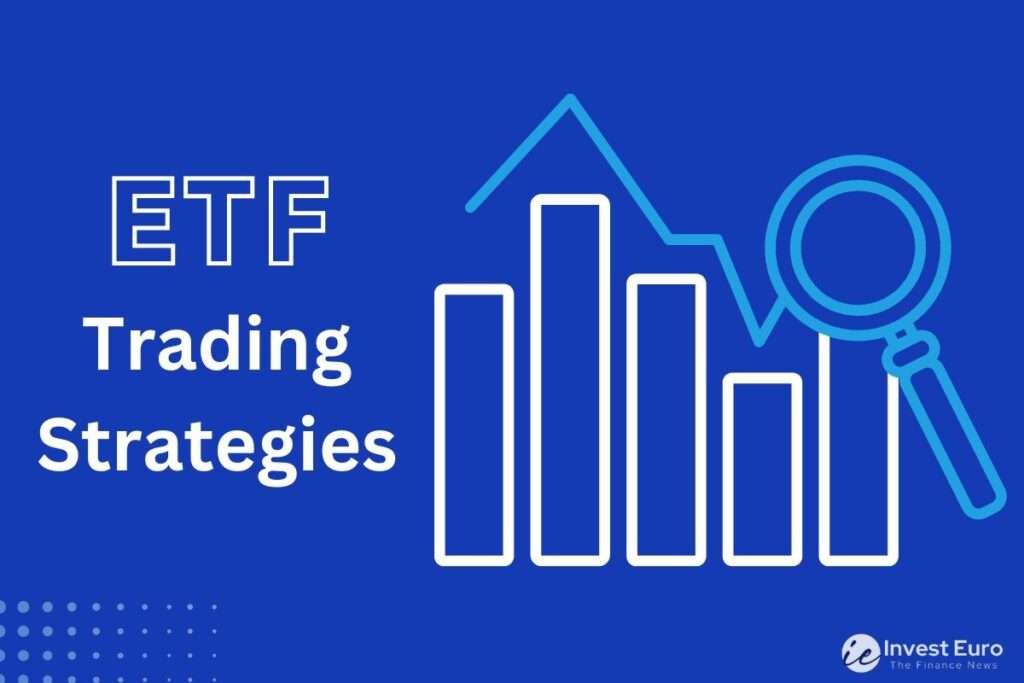Investments have become a moving target, and ETFs have redefined the investment landscape, creating an array of options for investors of all holdings. The knowledge on the market is, however, insufficient to navigate this field, but it calls for the use of the finest ETF trading strategies.
From an inexperienced learner about the rules to a market veteran looking for ways to perfect a portfolio that yields returns, this guide highlights various strategies essential for sustainable profits. Such strategies are necessary for long-term prosperity in the ETF market.

How does the ETF trading strategy work?
ETFs are one of the most liquid financial instruments available on stock exchanges. They provide exposure to a variety of equities index sectors, bond markets, commodities markets, and other asset classes. Likewise, ETFs differ from mutual funds because they support intra-day trading, where investors can trade shares during a day in the market.
Due to their liquidity and ease of use, ETFs are favored by both long-term investors and short-term traders. Further, leveraged and inverse ETFs allow for more advanced trading methods where investors can take advantage of these trends to amplify their profits or capitalize on market corrections.
With this in mind, trading strategies are essential in a volatile market environment where they help manage volatility and return risk. These approaches can be classified as investment parts, rates, and risk levels. A trading strategy allows traders to protect themselves from fluctuations in their emotions, adapt to the changes in the market, and think rationally.
The common ETF trading plans are dollar-averaging, asset allocation, swinging trading, sector rotation, short selling, seasonal trend taking, and hedging.
ETF Trading Strategies:
1. Dollar-Cost Averaging:
Consistently investing a fixed-dollar amount in an ETF, regardless of market movements, is the essence of dollar-cost averaging. This strategy mediates the effects of market volatility, enforces savings discipline, and enables investors to accumulate more units at cheaper rates over the long run.
For instance, one might invest $500 monthly in an ETF portfolio diversified over time, aiming to accumulate wealth unaffected by short-term market factors.
2. Asset Allocation:
It is basically a strategic measure that seeks to reduce the risks in the portfolio while maximizing returns in the long term by diversifying various asset classes. Through diversification of investments across various asset classes, i.e., stocks, bonds, and commodities, investors try to reduce losses on selected asset classes.
Moreover, the provision allows an investor to make investment decisions depending on his or her risk tolerance level and the maturity period of their investments. To ultimately achieve a thoroughly diversified portfolio that can cushion itself against market movements and provide consistent growth over the long haul,.
3. Swing Trading:
By using technical and fundamental analysis, swing trading takes advantage of price movements within ETFs over the short term. With that, the dynamic nature of the market ensures that traders are able to pinpoint entry and existing points.
Thanks to the ETF liquidity and trading patterns, which enable them to carry out profitable swing trades. For example, traders will use indicators such as moving averages and RSI to determine oversold or overbought stages in ETFs, thereby establishing good swing trading positions.
4. Sector Rotation:
Flexibility is the strategy by which investors switch investments from one sector to another due to economic and performance changes. This strategy attempts to take advantage of gains by shifting funds towards areas performing better, thereby causing sector-specific risks to diminish, as well as adjusting to changes in the market. For example, investors can prefer to invest in technology ETFs around times when innovation happens and in defensive sectors like consumer staples during a recession.
More For You:
Top 3 commodities for investment
How to learn technical analysis in 4 easy steps
5. Short Selling:
Short selling is an investment activity from which one benefits when the prices of an ETF decrease. This involves borrowing shares to be sold later at a reduced cost.
This approach provides opportunities for reducing markets, allows easy mitigation of losses linked to negative risks, and uses ETF liking in conversion trading.
For instance, leveraged ETFs are widely used during market falls as short selling is carried out during the period of high price disparity, which leads to higher returns.
6. Betting on Seasonal Trends:
The use of seasonal patterns in ETFs is aimed at using trends so as to improve the portfolio manager. This approach comes with seasonal patterns, reduced risk with stop-loss orders, and high reward in a bullish market.
For instance, gold ETFs are available to such investors at times of high demand during wedding seasons or certain festivals to take advantage of high prices.
7. Hedging:
ETFs help protect the portfolio from downside challenges. This strategy helps to protect against losses in the event that someone loses his or her money; it addresses asset risk specificity and offers an efficient cost management tool. For example, during unstable market environments such as the ones mentioned here. Investors may use short-selling or inverse ETFs to hedge against market corrections and protect their capital.
Final Thoughts on ETF Trading Strategies:
Investors have unlimited options they can use if they want to practice ETF trading strategies in an effort to improve their portfolio. Everyone is familiar with various styles that recruit users to integrate them into their investment aims and risk spreads so as to raise the yield and precisely understand market fluctuations.
Automated processes like dollar-cost averaging contribute to long-term financial success. While swing trading offers short-term gains alongside other advantageous ETF trading strategies.
Conclusion:
It is crucial for novices to learn ETF trading strategies to understand and invest in financial goals. According to their knowledge level to avoid conflict with the jargon of investment professionals. Having a better knowledge of the different ETF trading strategies makes it possible for investors to reduce their losses and gain profits in return.
While investing in inefficient portfolios in the long term. From trades with dollar-cost averaging for a disciplined investing approach to switches to and fro on supply with looking to capitalize quickly. ETF trading strategies allow the proactive investor the opportunity of informedly making his money grow.
FAQs:
Is an exchange-traded fund appropriate for a long-term investment?
Hence, investments made through ETFs can be considered to be applied to short-term as well as long-term investment strategies. This is because the financial position and time horizon determine whether an investor is participating in a short- or long-term strategy.
Long-term investors, that is, those who trade over time, might benefit from such diversification. Within a balanced investment portfolio, diversification and cost-effectiveness of ETFs.
What are the tax implications of ETF investing?
Tax considerations for ETF investing are determined according to such issues as capital gains’ distributions, sale timing, or tax-efficient investments. Capital gains recognition can be managed by investors by selling shares of ETFs at strategic timings and with a proper selection of tax-efficient opportunities.
In comparison, ETFs are more tax-efficient investments than mutual funds since they have lower levels of portfolio turnover and fewer capital gain distributions. As such, investors incur reduced taxes for ETF investments as compared to mutual funds, which realize huge capital gain distributions that often translate into high rates of taxation.
Can ETFs be used for hedging purposes?
ETFs provide a cheap and efficient way to insure negativity as part of the money allocated to downside risks in an investment portfolio. Through using inverse ETFs or employing short-selling techniques, investors will be able to protect themselves from losses. It may occur in the market when going downward but remain exposed to other different types of assets.
Using inverse ETFs and short-selling tactics, hedging with ETFs can mean reducing the losses in other holdings during market downturns by attempting downside protection and maintaining capital.



